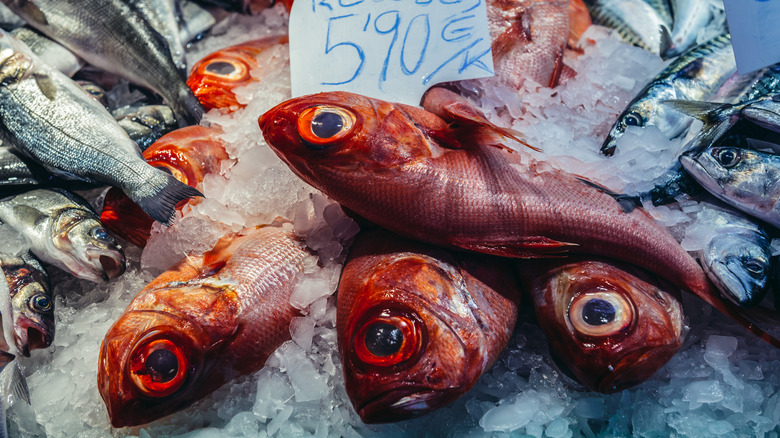The Popular Deep Sea Fish You Should Think Twice Before Eating
It's long been a staple on seafood menus and in frozen fish fillets at the grocery store. But dig a little deeper and orange roughy (also known as deep sea perch) is actually one of the most environmentally unsustainable and nutritionally questionable fish you can eat. Here's why this deep-sea dweller is better left in the ocean.
At first glance, orange roughy seems like an ideal catch. It's mild in flavor, firm in texture, and easy to cook. This deep-sea species is one of the longest living, but it's often caught using destructive methods. These slow-growing fish don't reach reproductive maturity until they're 20 or 30 years old which makes them extremely vulnerable to overfishing. When industrial fishing began targeting them in the late 1970s, no one realized they were pulling centenarian creatures from the depths.
What's wrong with eating a century-old fish? These populations take decades to recover from overfishing. In many parts of the world, particularly New Zealand and Australia, populations are still recovering even with organizational attempts to improved sustainability efforts. Perhaps most importantly for us fish-eaters: Because these fish live for such a long time, they are accumulating a large amount of mercury in their bodies, making them one of the most contaminated fish you can eat. According to the FDA, orange roughy is among the "choices to avoid" for young children, pregnant women, and people who eat seafood frequently. Mercury is a neurotoxin, and while occasional consumption may not be harmful to most healthy adults, it's still advised to monitor your intake.
Orange roughy is caught using destructive methods
Orange roughy like to hang out in the depths of the ocean. They're usually found 3,000 feet or more below the surface living near underwater mountains and plateaus. To catch them, boats drag massive nets along the seafloor in a process known as bottom trawling. This technique is incredibly damaging to fragile marine ecosystems because the trawls don't just scoop up fish — they also destroy coral, sponge beds, and other deep-sea life in the process. That level of destruction takes a long time to recover from. If you care about ocean health and biodiversity, supporting a fishery which razes entire underwater habitats just so you can have fish for dinner should be a hard pass.
In U.S. waters, commercial fishing of orange roughy has largely stopped, but imported fillets remain available and often come from fisheries with poor sustainability records. If you're looking for a mild, white-fleshed fish that's versatile in the kitchen, there are plenty of other, more sustainable, and safer choices. Try Pacific cod, halibut, or Coho salmon. These fish are more responsibly managed, have lower mercury levels, and can be just as tasty in your favorite recipes.
Better yet, consult a guide like the Monterey Bay Aquarium's Seafood Watch, which offers up-to-date recommendations on the most sustainable seafood choices available in your region. Between its ultra-slow growth, high mercury content, and destructive harvesting methods, orange roughy is a choice that hurts both you and the health of the ocean. Let's leave these ancient fish to enjoy their retirement deep under the sea.

